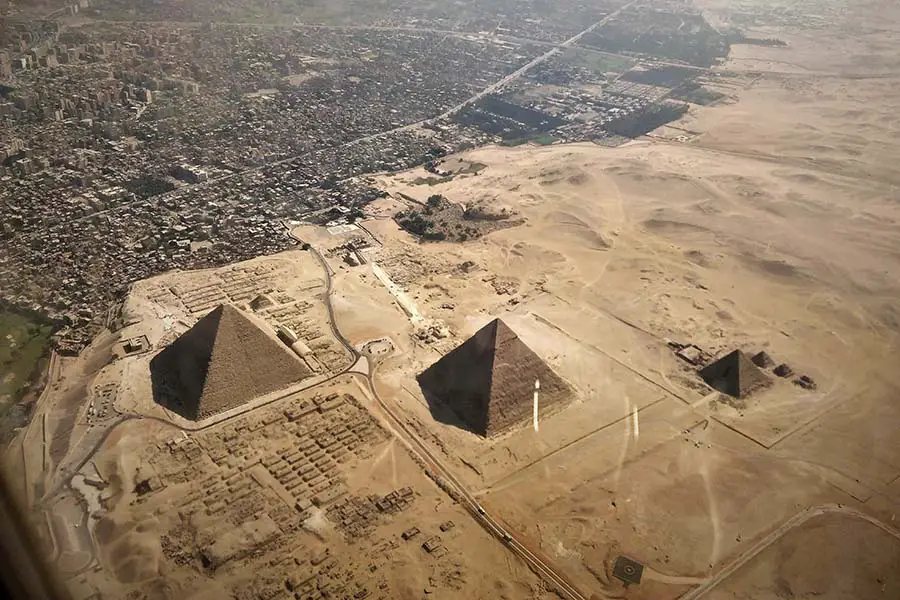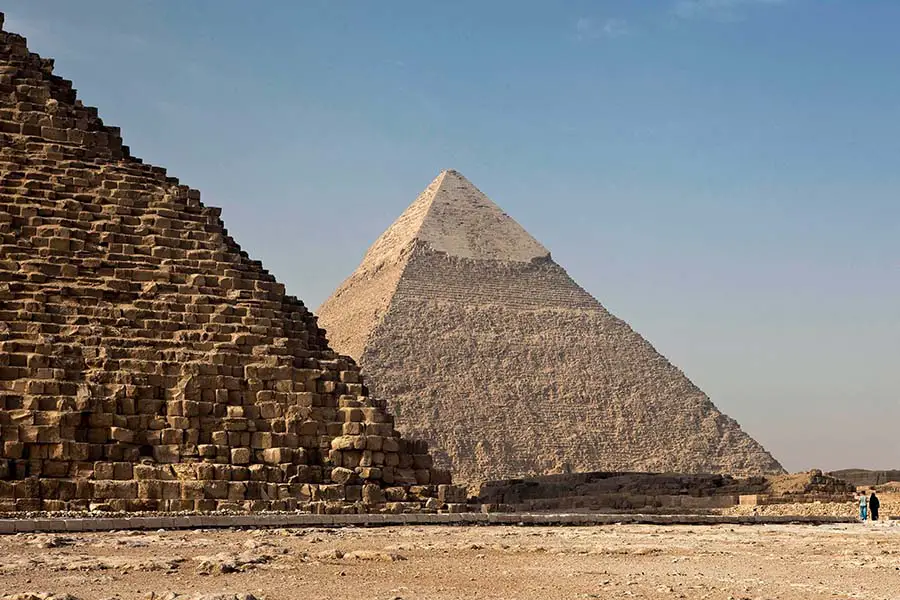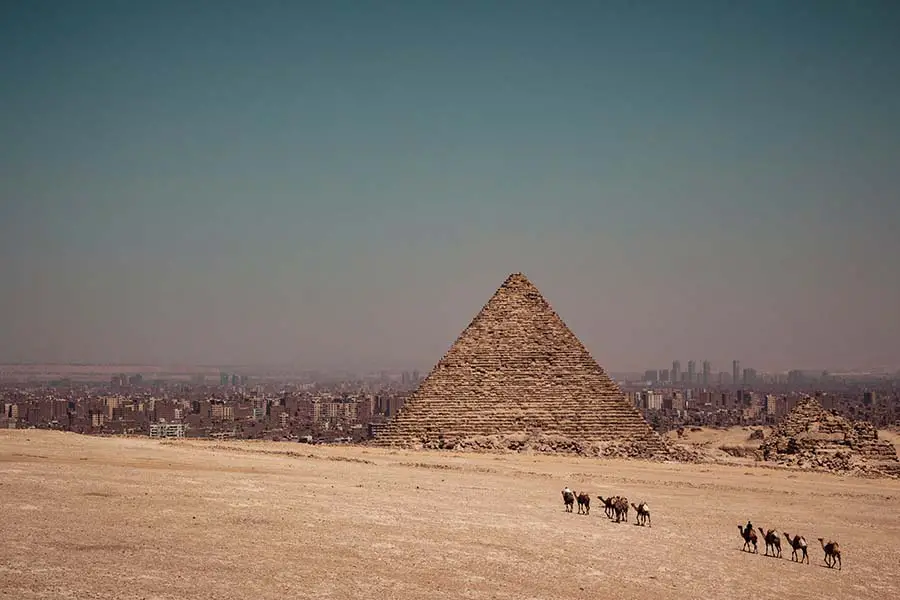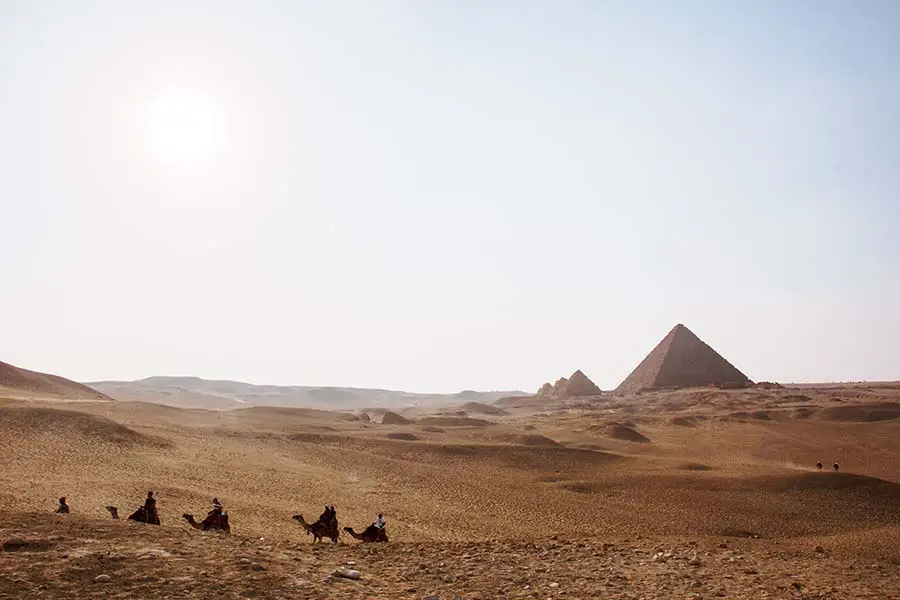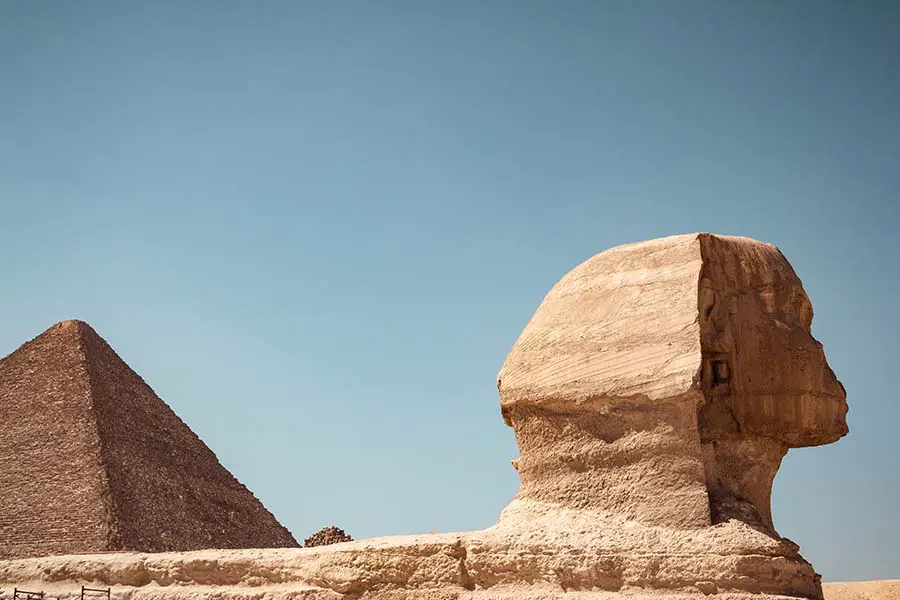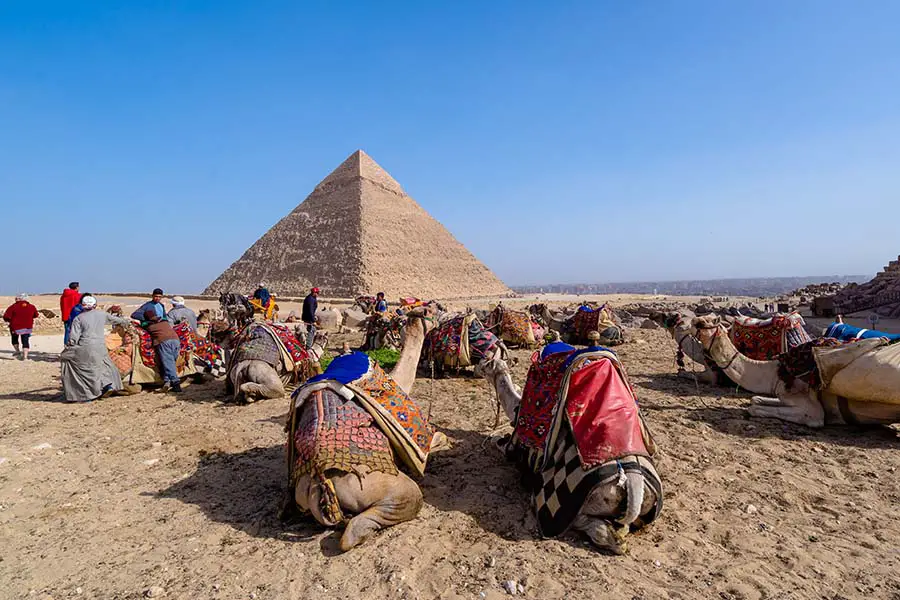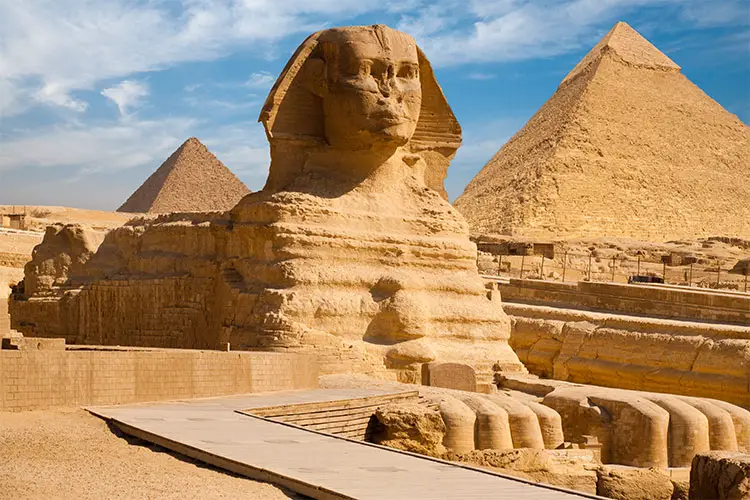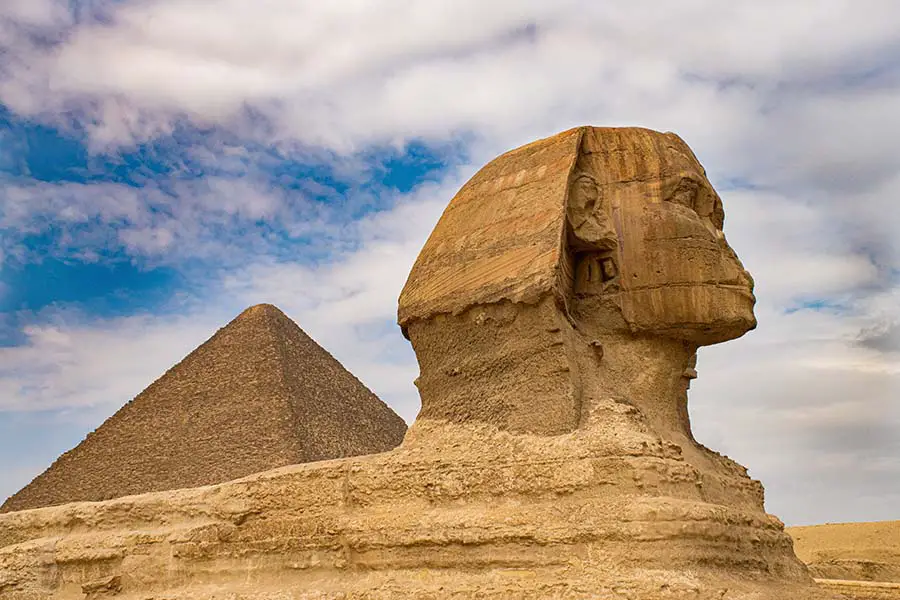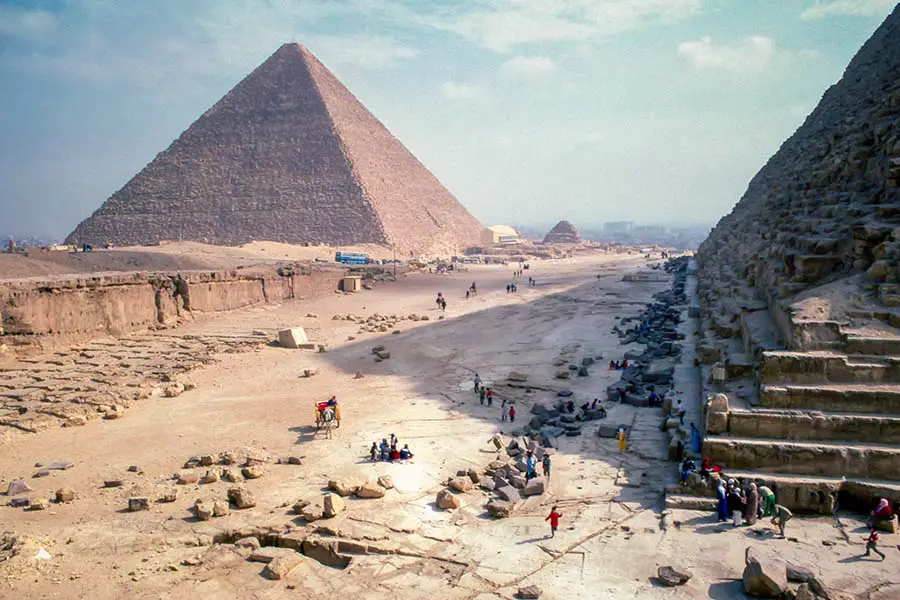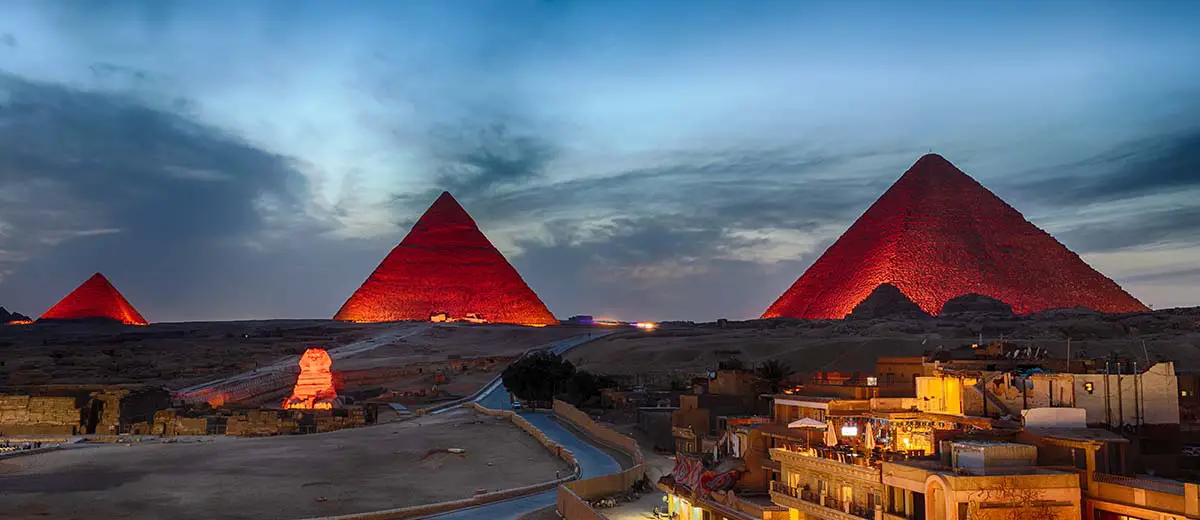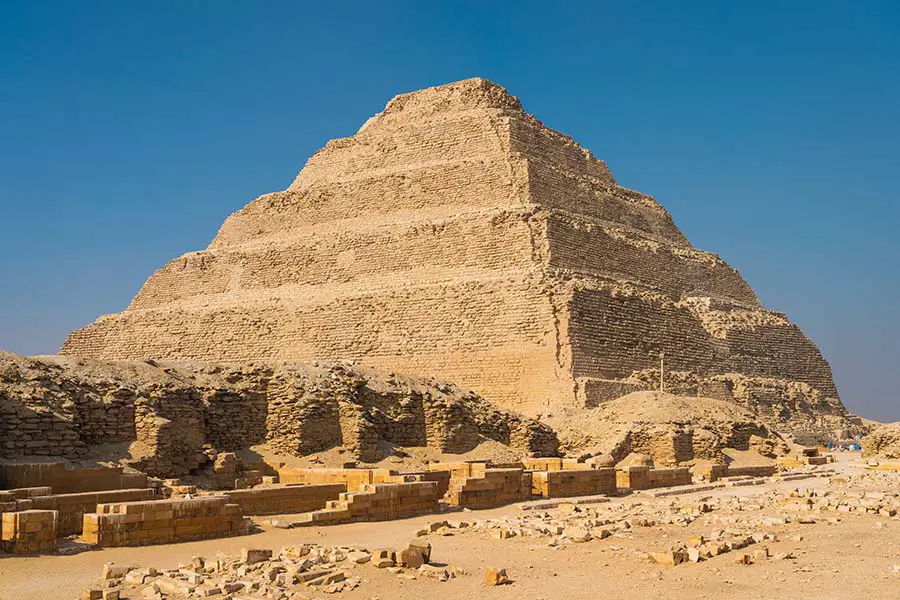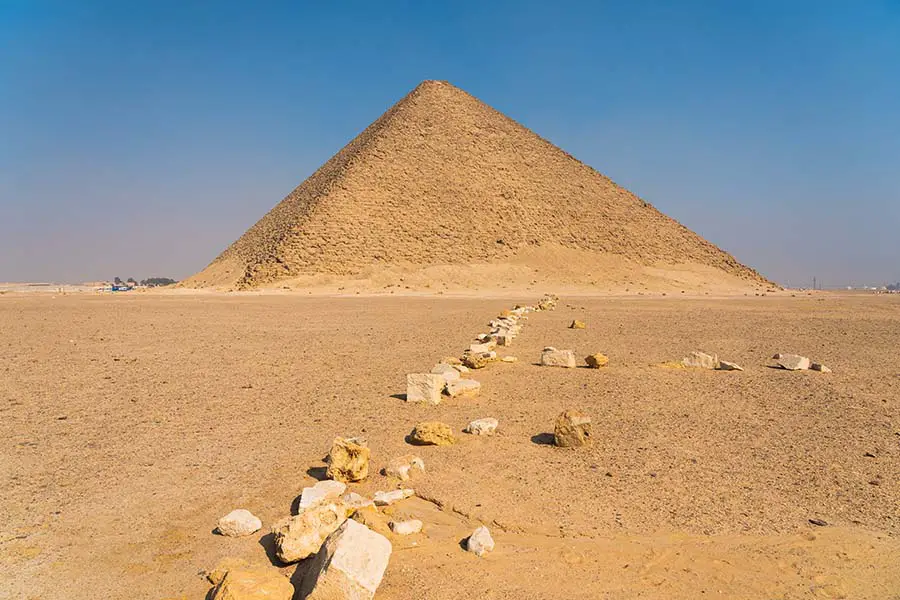The Pyramids of Giza | Ancient Egypt, 2600 BC
Born on the banks of the Nile in northern Africa, Ancient Egypt was, arguably, the first great civilization. Spanning roughly 3 millennia from 3100 BC to the Roman Invasion in 30 BC, the Egyptians achieved some of the first epic feats of engineering including a succession of pyramids culminating in the grandest of all ancient wonders, the Pyramids of Giza.
Ancient Egypt’s first pyramids (not at Giza) Left: Pyramid of Djoser & Right Red Pyramid
Built as a tomb for the Pharaoh Khufu in 2,600 BC, the first and largest of Giza’s pyramids, the Great Pyramid, stands at a height of almost 500 feet and stood as the world’s tallest man-made structure for almost 4,000 years. One of the reasons these pyramids are so impressive is the mystery that surrounds their construction; the Great Pyramid is estimated to contain 2.3 million stone blocks each weighing between 2.5 to 15 tons. The pyramids are part of the Giza Necropolis, which also contains the Great Sphinx of Giza.
Excuse me! Are you on Pinterest?! Here are a couple of pins!
Gallery
This post is part of an expanded series taken from 37 Wonders of the World in Chronological Order. You can click the link to read more, watch the video or navigate between individual posts beneath the gallery. Enjoy!
